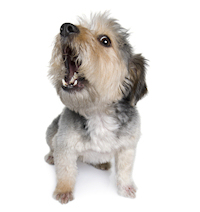|
|
||||
|
|
|
|
||
|
|
|
|
|
Donkey Information Directory |
||||||||||||||||||
Miniature donkeys, the breed most widely known for being kept as a pet, are native to the Mediterranean islands of Sicily and Sardinia. It is difficult to import them now because: 1) The quality of donkey left in Sicily and Sardinia is not good, and, 2) It is very difficult to pass the tests given by quarantine stations at the Dept. of Agriculture. Miniature Donkeys have not been bred down in size per se. The 25-30 Miniature Donkeys originally imported into the U.S. were between the sizes of 32" and 38" with the majority of them being in the 35"-37" size range. Over the years, breeders have concentrated more on the 32"-33" size and today, your most desirable and well-conformed donkeys are from 31" to 35". The word "miniature" usually connotes animals that have been bred-down in size, so keep in mind that ‘miniature donkeys’ are simply diminutive and not bred down such is the case of many other ‘miniature’ animals. Color The most prevalent color for Miniature Donkeys is gray-dun which consists of a gray colored body, light colored nose – or dark colored nose -, light colored belly and inside legs, with a dark color dorsal stripe down the back and over the shoulders. The dorsal stripe is known as the donkey’s cross. There are variations of this gray-dun from dark to light. As with most animals, donkeys can range in color from black to white and everything in between. True blacks are extremely rare with black/browns (not quite black) being more common. There are chestnut/sorrels, which are various shades of reddish brown. There are also white donkeys and "spotted" donkeys. Some people refer to spotted as "pinto" and this really boils down to semantics. Spotted or pintos are generally gray or brown and white. There are also various colors of roan color combinations. Roan coloring is black, brown, gray hairs intermingled with white hairs. Donkeys do not breed true to color. Since gray-dun is by far the predominant gene, you can breed black to black and get gray-dun, spotted to spotted and get gray-dun, etc. Never knowing what color foal, or young horse/donkey, will be produced is part of the excitement of having foals. Colors other than the typical gray-dun make the donkey more exotic looking therefore increases their price. |
|
|
||||||||||||||||
| © Planet-Pets.com, All Rights Reserved | ||||||||||||||||||

